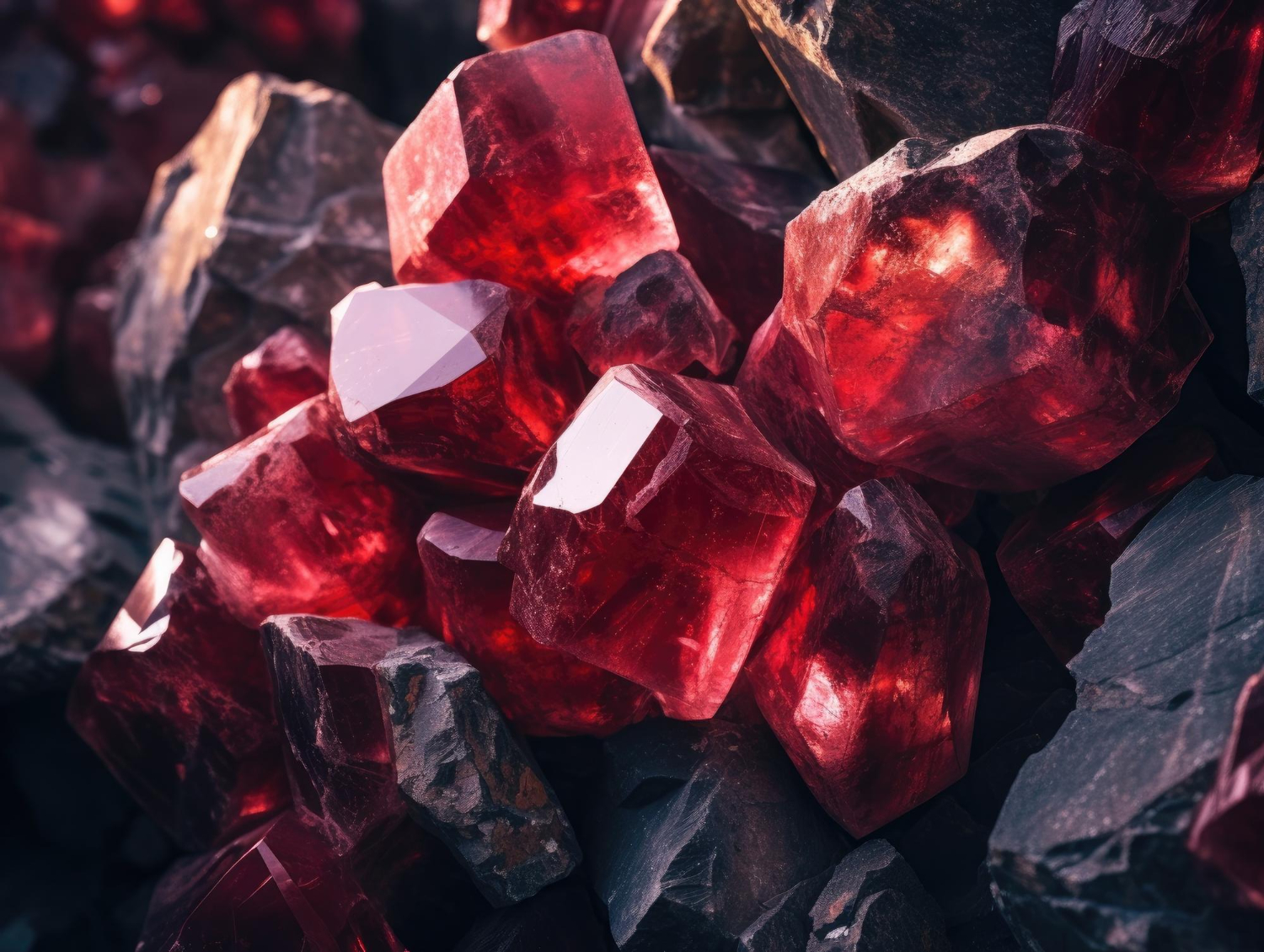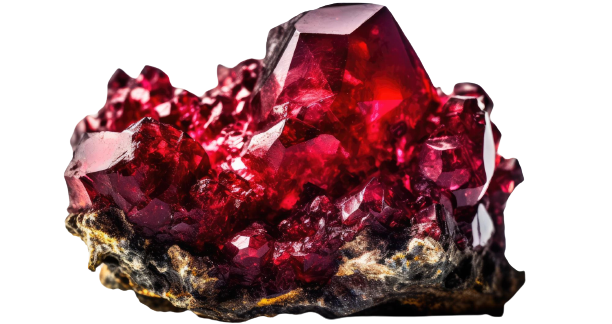Ruby | July
Ruby, belonging to a mineral family with close associations, showcases a stunning spectrum of colors. Exploring the distinctive color variations within this gemstone species can unveil valuable knowledge.
Ruby: The Regal Gem of July
In the grand tapestry of time, where stars and celestial stories intertwine, a profound tradition was born – the enchanting world of birthstones. Pioneered by luminaries like Flavius Josephus, this tradition wove a celestial connection between zodiac constellations and earthly gemstones. Among this cosmic ballet, in the radiant aura of July, enters Ruby – a gem that not only gleams but resonates with the echoes of history and the majestic heartbeat of the universe.
Consider, through the lenses of both ancient legends and contemporary science, a gemstone born deep within the Earth, emerging from the fiery crucible of the planet’s core. Forged by the Earth’s primordial forces, Ruby stands as a testament to the strength inherent in the souls born in July. Its name hails from the Latin word ‘ruber,’ meaning ‘red,’ signifying passion, vitality, and the flame of life.
Throughout the annals of time, Ruby has been adored by cultures worldwide. It has adorned the crowns of monarchs and the hearts of poets, revered for its protective qualities and its power to ignite the flames of the heart. From the royal courts of ancient civilizations to the modern world, Ruby has remained a symbol of love, courage, and a life well-lived.
With a captivating range of red hues, from fiery scarlet to deep crimson, Ruby’s colors reflect the diverse and vibrant personalities of those born in July. Scientifically, these variations stem from different trace elements found within its crystal structure, yet symbolically, each shade embodies the passion and intensity of its wearer.
Beyond its sheer beauty, Ruby transcends into the realms of contemporary science and exploration. It is treasured by geologists as a key to understanding Earth’s geological history and has found applications in various fields, from art to technology. Nevertheless, at its heart, it remains a gem of legends, dreams, and cosmic narratives.
So, why Ruby for souls touched by the enchantment of July? Because it’s not just a gem; it’s a regal link to the cosmos, an emblem of ardor, and a vessel for ancient sagas and scientific marvels.
Within the embrace of Ruby, one discovers the harmonious fusion of age-old myths, modern revelations, and the timeless grandeur of the universe.

Ruby: The Alluring Gem of July
Color Varieties: Ruby is celebrated for its mesmerizing shades of red, which can range from vivid crimson to deep maroon. The variations in color intensity are attributed to the amount of chromium and other trace elements found within the gem. These nuances create a captivating spectrum of red hues.
Notable Ruby Varieties:
- Pigeon’s Blood Ruby: Renowned for its intense, pure red color, often considered the most coveted shade.
- Star Ruby: These rubies exhibit a star-like optical phenomenon known as asterism, with a visible star pattern on the surface when exposed to light.
Formation and Occurrence: Rubies are typically formed in metamorphic environments where high heat and pressure transform existing minerals into corundum, the mineral family to which rubies belong. These gemstones are often found in marble, basalt, and schist rocks. Significant deposits of rubies are located in regions like Myanmar, Sri Lanka, and Thailand, and their formation provides insight into the Earth’s geological history.

Historical Significance: Rubies have a rich and storied history. They are symbols of love, passion, and power. Throughout the ages, rubies have adorned the crowns and jewelry of royalty and nobility. They have been associated with protection, courage, and good fortune, with their deep red hue signifying the fiery intensity of life.
Modern Uses: Rubies continue to be highly sought after in the world of fine jewelry. Their breathtaking beauty and deep red color make them a favorite choice for engagement rings, pendants, and other statement pieces. Beyond their aesthetic appeal, rubies hold historical and symbolic significance, embodying the enduring spirit of July-born individuals and captivating jewelry enthusiasts worldwide.Ruby, with its fascinating geological origins and timeless allure, remains a cherished gemstone, symbolizing love, vitality, and the grandeur of the human spirit.
Scientific Fact: "Ruby's Geological Significance"

Ruby, beyond its celebrated beauty and cultural significance, also plays a pivotal role in the realm of geology. Most rubies originate in metamorphic environments where high temperatures and pressures transform existing minerals into the precious gemstone known as corundum. This geological context renders rubies invaluable to geologists seeking insights into Earth’s ancient processes and conditions.
The exceptional red hue of rubies is primarily attributed to the presence of chromium, which integrates within the crystal lattice of the corundum. This unique combination of chemical elements and geological forces results in the vivid and enchanting spectrum of red shades for which rubies are renowned.
Geologists regard rubies as key indicators of past geological events, offering critical clues about the earth’s evolutionary history. The presence of rubies in specific geological formations aids scientists in unraveling the story of ancient metamorphism, tectonic activity, and mineralization within the Earth’s crust.
While rubies bear profound geological importance, they simultaneously retain their allure as gemstones of immense aesthetic and cultural value, serving as a remarkable bridge between the realms of science, beauty, and symbolism.
